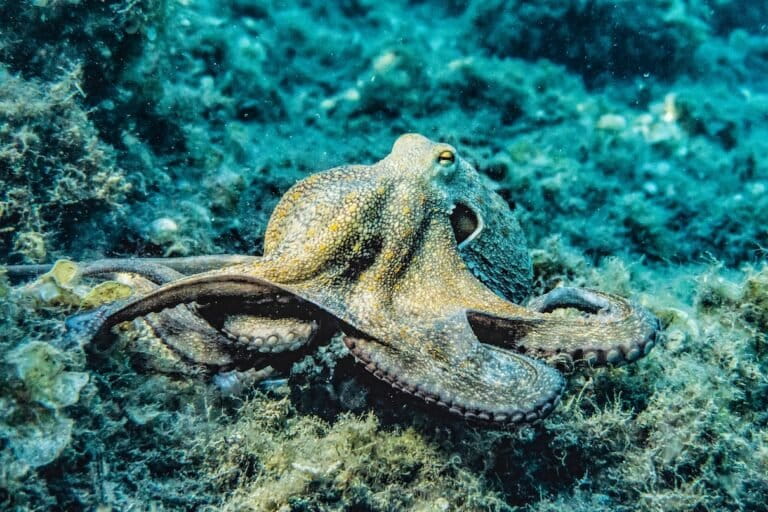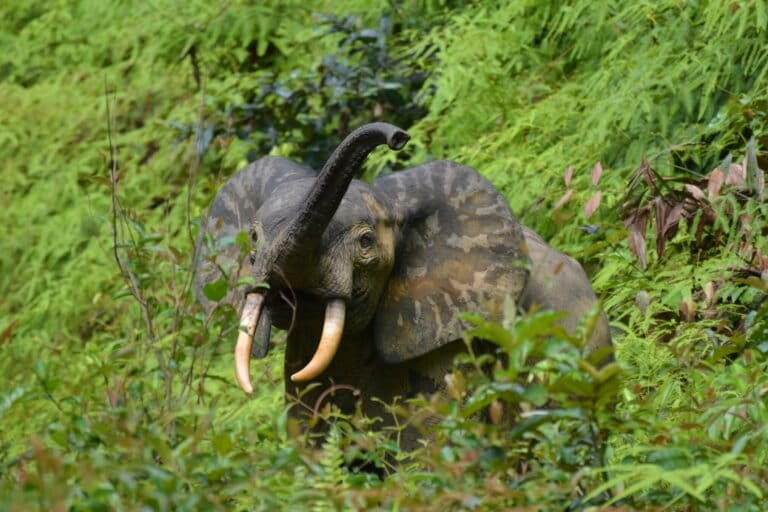- “A conservation ethic that fails to account for animal sentience runs the risk of causing serious harms to those that are undeniably capable of experiencing them,” a new op-ed argues.
- But philosophical training and tools can help conservationists navigate the diverse values represented in their work.
- “Regardless of whether you view pigs as pests, pets, or pork, their lives as individuals are morally relevant to our conservation discussions.”
- This post is a commentary. The views expressed are those of the author, not necessarily of Mongabay.
The darker corners of YouTube document state-sanctioned conservation efforts with video compilations of feral pig hunting. Legal, lethal control of this exotic invasive species is on full display as citizens use guns and iPhones to complete the job. Interested viewers need not search hard to find hog hunting footage of aerial gunning from helicopters or trapping and shooting on foot. While the videos of these hunts offer entertainment for many millions of viewers, there may be some of us who question if conservation work should ever need to be prefaced with a graphic violence warning.
In the southern United States, feral pigs are a conservation problem. Though residents in that part of the country who’ve never had to contend with them may have remained oblivious to their existence until earlier this year when news of a destructive Canadian “super pig” began threatening a descent into the country. The concerns surrounding these wild pigs are not misplaced, as they can cause a great deal of economic and ecological damage, with associated annual costs topping $2.1 billion in the United States. Pigs trample crops, decrease water quality, and spread disease; but they also play joy-stick controlled video games, demonstrate empathy, and develop introverted and extroverted personalities. It’s true, pigs have playful, emotional, and complex lives.
Many of us have been trained to accept the harms of our conservation actions, especially as it relates to nonhuman animals (henceforth, animals), as necessary means to desired ends. Trophy hunting, in particular the 2015 killing of Cecil the Lion in Zimbabwe by a wealthy American, highlight this common conservation orientation. Taking Cecil’s life for a trophy is justified insofar as the money generated from the expensive hunting license goes towards conservation efforts like habitat or species protections. The harm is justified on consequentialist grounds, a branch of normative ethics which judges the morality of our actions based on the consequences of those actions. Which is to say, “Do the ends justify the means?” This brand of consequentialism has been the reigning conservation ethic since the field’s inception.

Because conservation is unavoidably normative as an applied science, shouldn’t conservationists have in the very least, a basic understanding of the ethical underpinnings that guide their conservation decisions? Traditional conservation science in both theory and practice lacks a robust conservation ethic capable of evaluating multiple value systems and accommodating evolutions in science. This deficiency is particularly problematic as it relates to our growing understanding of the emotional lives of animals.
We are living in the age of the Anthropocene with a human population topping 8 billion people, unprecedented extinction rates, and widespread ecosystem degradation. It would make sense that under these conditions a triage-like scenario would emerge whereby morally ambiguous means could potentially justify the desired ends. But do our conservation goals always justify our conservation actions?
Consider the National Park System in the United States whereby the government has succeeded in protecting 85 million acres of natural and cultural resources in perpetuity for future generations. An embodiment of fortress conservation, this and other public land systems in the United States and around the globe are responsible for the displacement of an estimated 10-20 million people, resulting in a multitude of harms. Did our ends justify our means? Consequentialist conservation risks the possibility that any action, even a truly harmful one, could be justified so long as the results of that action be interpreted as justification.
An additional limitation of this consequentialist thinking arises in our struggle to predict the future accurately and reliably, criteria important in tackling wicked conservation problems. Consider the use of toxicants to control unwanted animal populations. In New York City, poison is used to control urban rat populations that spread disease, damage property, and disrupt ecosystems. However, one study found that rat poisons were detected in 89% of dead red-tailed hawks found in New York City.
Unknown and unpredictable harms can often result from our conservation actions, so how can we accurately predict the morality of those actions based on unknown consequences? Even if we set aside our concerns for the emotional lives of rats and measure our success based on their eradication, the unintended killing of native bird species complicates our ability to judge the ethical acceptability of rat poison.

All this to say, it’s not that consequentialism is never appropriate in conservation; sometimes it’s necessary and moves us towards our goals in an ethically sound way. Rather, the rightness or wrongness of our conservation actions cannot always be judged based on the moral acceptability of the results of those actions. We may meet our conservation goals at the cost of great harm, or we may inaccurately predict the consequences of our actions and thus lack a guide in evaluating the ethical acceptability of our actions in and of themselves.
This steadfast adherence to a conservation principle that primarily values desired outcomes can create ethical blind spots, which pose a moral risk as we work to embrace new and evolving science. Our understanding of the animal mind has rapidly progressed beyond those of 17th-century philosopher Descartes, who famously denied the existence of such a thing to the mere machines he believed animals to be. We now know that many animals are sentient; capable of experiencing positive and negative subjective states, or emotion.
Criticisms of animal sentience, and a barrier to its integration in conservation practice, rest on the assumption that it is impossible to measure the subjective state of an animal in an objective, robust, and empirical way. However, a recent literature review of two decades of peer-reviewed scientific research found that these concerns of abstraction are unfounded, as scientists consistently and concretely document the emotional lives of animals.
The recognition of sentience extends well beyond the laboratory, as a prominent group of neuroscientists recently signed The Cambridge Declaration on Consciousness declaring a significant portion of the animal kingdom sentient. Just last year, the United Kingdom joined dozens of other countries in introducing legislation to recognize animal sentience in law. Animals have rich and complex inner lives. To suggest or act otherwise is just bad science.
Scientific and philosophical literature has consistently pointed to the quality of sentience as a condition for moral status. Individual animals must be valued as morally relevant actors in our conservation calculations, and it’s time to reorient ourselves to a new conservation ethic that is capable of encompassing this and other value systems: a conservation pluralism.
See related: Captive tiger trade continues as wild populations decline

Recognizing the moral worth of individual animals may at first seem to undermine our work, especially in a field that has for so long valued outcomes associated with populations and ecosystems. But philosophers and conservation practitioners alike can begin to take steps to move this practice in pluralism away from armchair philosophy and into the field.
First, future conservationists should be educated in basic philosophy. In contrast with other mission-driven scientific fields, budding conservationists are seriously deficient in their ethical training. Even an introductory environmental ethics course would suffice to introduce students to the basics of philosophical discourse, offer historical perspectives and modern trends in conservation ethics, and provide the tools necessary to make sense of a diversity of perspectives and values.
Secondly, the achievement of both scientifically sound and ethically responsible conservation decisions should be practiced and prioritized in the field. A recent ethical analysis grounded conservation ethics in action by taking a closer look at a case study involving the collection of eggs from one of the oldest remaining northern white rhinoceroses. The approach filters the consequences of potential conservation actions through two lenses: probability of realization and ethical acceptability. Ethical acceptability is informed by the variety of values represented in the environment, people, and animals impacted. This study demonstrates that a pluralistic conservation ethic is possible, and applicable.
Regardless of whether you view pigs as pests, pets, or pork, their lives as individuals are morally relevant to our conservation discussions. A conservation ethic that fails to account for animal sentience runs the risk of causing serious harms to those that are undeniably capable of experiencing them. Even if we disagree on the weight to give those harms in our conservation calculations, we ought to be able to integrate and negotiate those concerns in both a theoretical and empirical sense. A conservation pluralism offers practitioners the opportunity to embrace diverse values, viewing them not as an impediment to good conservation, but a necessity.
Nicole Roberts is a graduate student in the Conservation Leadership program at Colorado State University.
Related listening from Mongabay’s podcast: The killing of Cecil the Lion by an American trophy hunter sparked a global debate over ethics, Jane Goodall and others joined us in discussion, listen here:
Montana cannot be trusted with grizzly bear & wolf management (commentary)
Citations:
Agrawal, A., & Redford, K. (2009). Conservation and Displacement: An Overview. Conservation and Society, 7(1), 1–10.
Animal Welfare (Sentience) Act 2022. (n.d.). Queen’s Printer of Acts of Parliament. Retrieved April 2, 2023, from https://www.legislation.gov.uk/ukpga/2022/22/enacted
Bekoff, M. (2022). Time to stop pretending we don’t know other animals are sentient beings. Animal Sentience, 6(31). https://doi.org/10.51291/2377-7478.1699
Biasetti, P., Hildebrandt, T. B., Göritz, F., Hermes, R., Holtze, S., Stejskal, J., Galli, C., Pollastri, I., Muzzo, A., Lekolool, I., Ndereeh, D., Omondi, P., Kariuki, L., Mijele, D., Mutisya, S., Ngulu, S., & de Mori, B. (2023). Application of decision tools to ethical analysis in biodiversity conservation. Conservation Biology: The Journal of the Society for Conservation Biology, 37(2), e14029. https://doi.org/10.1111/cobi.14029
Conservation’s people problem. (2016, May 17). Mongabay Environmental News. https://news.mongabay.com/2016/05/186480/
Croney, C. C., & Boysen, S. T. (2021). Acquisition of a Joystick-Operated Video Task by Pigs (Sus scrofa). Frontiers in Psychology, 12. https://www.frontiersin.org/articles/10.3389/fpsyg.2021.631755
Destructive “Super Pigs” From Canada Threaten the Northern U.S. | Smart News| Smithsonian Magazine. (n.d.). Retrieved April 2, 2023, from https://www.smithsonianmag.com/smart-news/destructive-super-pigs-from-canada-threaten-the-northern-us-180981692/
Gosling, S. D., & John, O. P. (1999). Personality Dimensions in Nonhuman Animals: A Cross-Species Review. Current Directions in Psychological Science, 8(3), 69–75. http://www.jstor.org/stable/20182565
Lewis, S. L., & Maslin, M. A. (2015). Defining the Anthropocene. Nature, 519(7542), Article 7542. https://doi.org/10.1038/nature14258
Nelson, M. P., Bruskotter, J. T., Vucetich, J. A., & Chapron, G. (2016). Emotions and the ethics of consequence in conservation decisions: Lessons from Cecil the Lion. Conservation Letters, 9(4), 302-306.
Nuisance Wildlife in Texas: Wild Pigs. (n.d.). Retrieved April 2, 2023, from http://tpwd.texas.gov/huntwild/wild/nuisance/feral_hogs/
Okoniewski, J. C., VanPatten, C., Ableman, A. E., Hynes, K. P., Martin, A. L., & Furdyna, P. (2021). Anticoagulant Rodenticides in Red-Tailed Hawks (Buteo jamaicensis) from New York City, New York, USA, 2012–18. Journal of Wildlife Diseases, 57(1), 162–167. https://doi.org/10.7589/JWD-D-19-00003
Proctor, H. S., Carder, G., & Cornish, A. R. (2013). Searching for Animal Sentience: A Systematic Review of the Scientific Literature. Animals, 3(3), Article 3. https://doi.org/10.3390/ani3030882
Reimert, I., Bolhuis, J. E., Kemp, B., & Rodenburg, T. B. (2013). Indicators of positive and negative emotions and emotional contagion in pigs. Physiology & Behavior, 109, 42–50. https://doi.org/10.1016/j.physbeh.2012.11.002
Saltz, D., Justus, J., & Huffaker, B. (2019). The crucial but underrepresented role of philosophy in conservation science curricula. Conservation Biology, 33(1), 217-220.
Vucetich, J., & Nelson, M. (2013). The Infirm Ethical Foundations of Conservation. Ignoring Nature No More: The Case for Compassionate Conservation.













